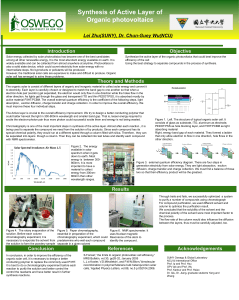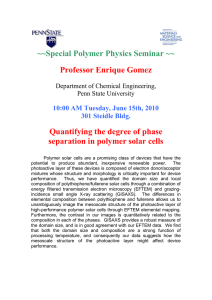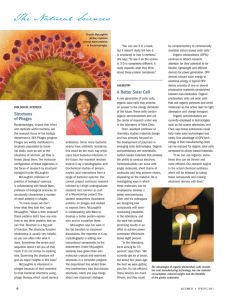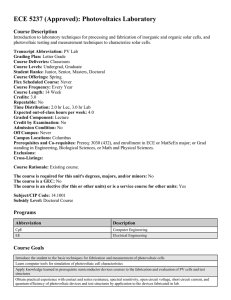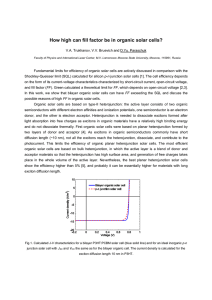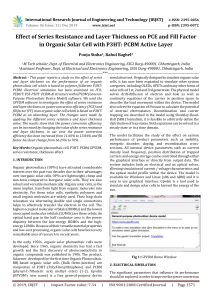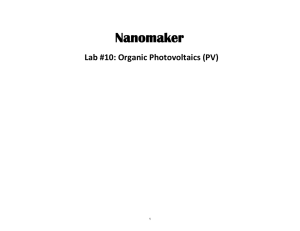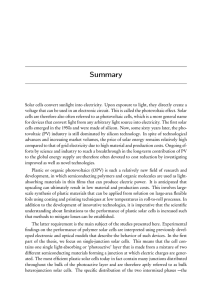Abstract: Tyler J. Perlenfein Advisor: Jason Baxter
advertisement
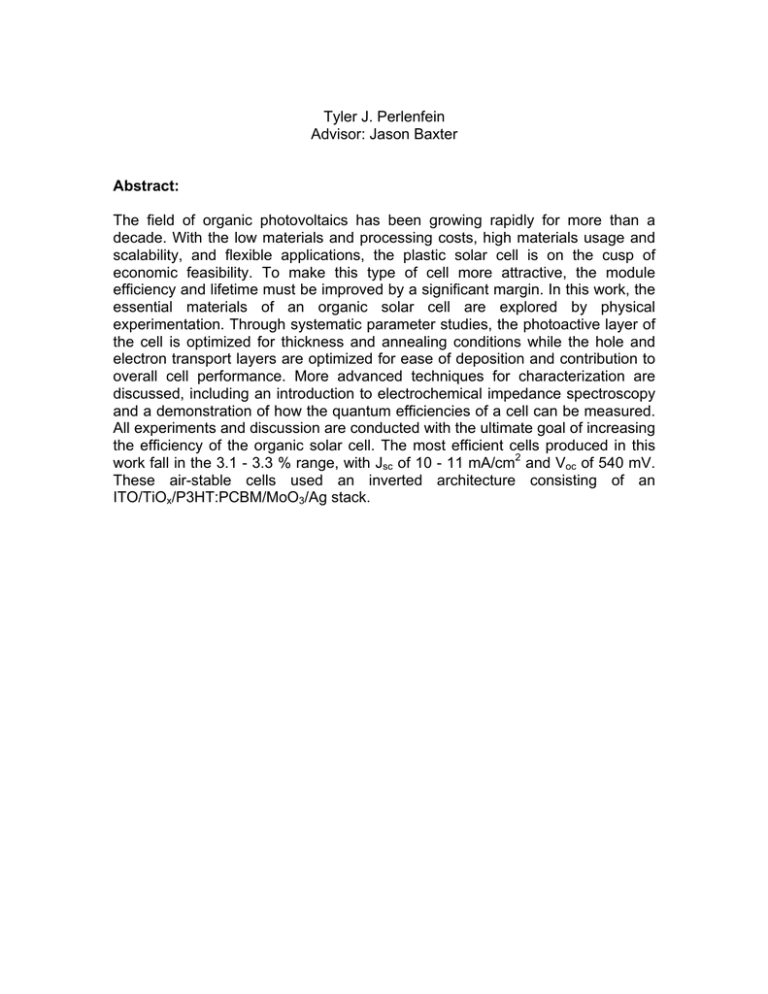
Tyler J. Perlenfein Advisor: Jason Baxter Abstract: The field of organic photovoltaics has been growing rapidly for more than a decade. With the low materials and processing costs, high materials usage and scalability, and flexible applications, the plastic solar cell is on the cusp of economic feasibility. To make this type of cell more attractive, the module efficiency and lifetime must be improved by a significant margin. In this work, the essential materials of an organic solar cell are explored by physical experimentation. Through systematic parameter studies, the photoactive layer of the cell is optimized for thickness and annealing conditions while the hole and electron transport layers are optimized for ease of deposition and contribution to overall cell performance. More advanced techniques for characterization are discussed, including an introduction to electrochemical impedance spectroscopy and a demonstration of how the quantum efficiencies of a cell can be measured. All experiments and discussion are conducted with the ultimate goal of increasing the efficiency of the organic solar cell. The most efficient cells produced in this work fall in the 3.1 - 3.3 % range, with Jsc of 10 - 11 mA/cm2 and Voc of 540 mV. These air-stable cells used an inverted architecture consisting of an ITO/TiOx/P3HT:PCBM/MoO3/Ag stack.


